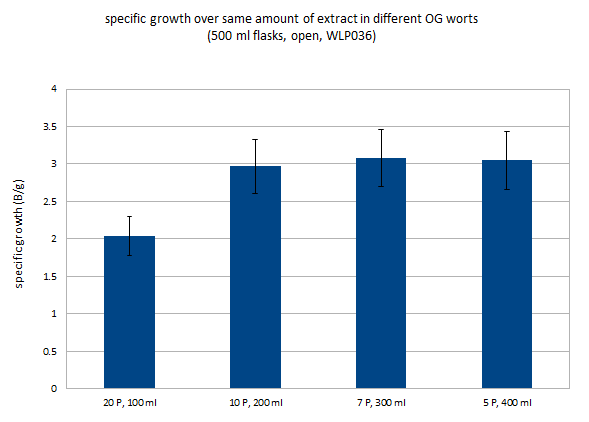I'm really trying to understand all of the functionality of a starter. Especially because I'm working on propagating a certain yeast into a very large amount to store away and to send off.
I'm wondering what is the difference for the yeast between 1.5L at approximately 1.075 and 2L at approximately 1.056? This is still 300g of DME into each one, meaning the same amount of total sugars in each wort. I read on the Mr. Malty 14 questions article that 1L of 1.040 wort (approximately 100g of DME) will result in 150% growth. While a 2L starter would result in 200% growth. This is taking into account pitching one vial of approximately 100 billion cells into each wort.
But how can I determine how much growth I will have according to innoculation rate and size of the wort?
I'm working on stepping this up, but I'm wondering if I've got the logic wrong. I did 1L and 100g of sugar 1st. Then 1.5L with 200g of sugar second. I was thinking of doing 2L with 300g sugar for the third and final step. But should I have just been aiming to have 1.040 with each step, and only increasing the volume size (and therefore the total sugars)?
I'm wondering what is the difference for the yeast between 1.5L at approximately 1.075 and 2L at approximately 1.056? This is still 300g of DME into each one, meaning the same amount of total sugars in each wort. I read on the Mr. Malty 14 questions article that 1L of 1.040 wort (approximately 100g of DME) will result in 150% growth. While a 2L starter would result in 200% growth. This is taking into account pitching one vial of approximately 100 billion cells into each wort.
But how can I determine how much growth I will have according to innoculation rate and size of the wort?
I'm working on stepping this up, but I'm wondering if I've got the logic wrong. I did 1L and 100g of sugar 1st. Then 1.5L with 200g of sugar second. I was thinking of doing 2L with 300g sugar for the third and final step. But should I have just been aiming to have 1.040 with each step, and only increasing the volume size (and therefore the total sugars)?



















































![Craft A Brew - Safale S-04 Dry Yeast - Fermentis - English Ale Dry Yeast - For English and American Ales and Hard Apple Ciders - Ingredients for Home Brewing - Beer Making Supplies - [1 Pack]](https://m.media-amazon.com/images/I/41fVGNh6JfL._SL500_.jpg)








